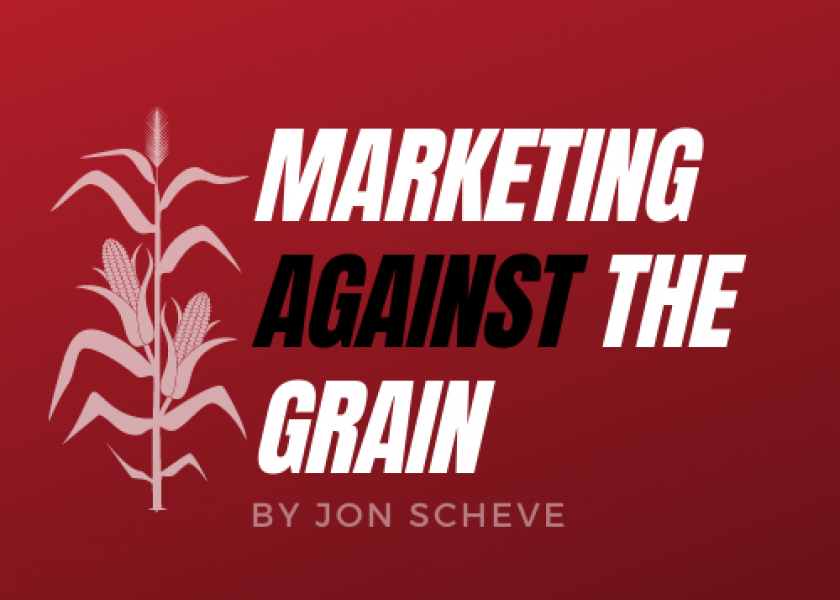China May Import 40% More Corn Than In The Last 60 Years Combined

Missed a recent article by Jon Scheve? Get it sent to you directly every week. Send a request by email: jon@superiorfeed.com
Market Commentary for 2/19/21
Export Demand
Corn demand from China has increased dramatically over the last few months causing corn to rally $2/bu from August lows. This chart shows how unprecedented China’s recent corn import demand has been compared to the last 60 years.
Source: Matt Campbell & USDA
Currently the USDA estimates China will import 24 MMT (Million Metric Tons) of corn from all over the world this year. Some private forecasts indicate it could even exceed 30 MMT (1 MMT = approx. 40 million bushels). To put that into perspective, China has only imported about 75 MMT of corn TOTAL over the last 60 years.
And for the last 6 years, of the 50 MMT of corn the US exports on average each year, only 2 MMT were sent to China (4%). In the last 6 years the US hasn’t provided even half of China’s yearly import needs.
Export Pace
USDA export predictions have increased from the previous 6-year average of 2 billion bushels (50 MMT) to 2.6 billion bushels (65 MMT) this year. However, Matt Campbell, a risk management consultant at StoneX, suggests these levels might be difficult to sustain in the chart below.
Source: Matt Campbell
The blue line shows US weekly corn shipments for the last 6 years. The brown line represents where weekly export shipments must average through the end of August to meet the current USDA export estimates. The green line represents where some bullish traders, who think export totals are underestimated by nearly 400 million bushels, need shipments to be.
The chart above indicates last week’s export pace could continue through August (the end of the marketing season) and hit current USDA export estimates. Meeting the export pace of the green line would be more difficult as that would mean a sustained record shipment pace for over 25 weeks.
What Is “Normal” for US Export Shipments?
In the ‘16/’17 and ‘17/’18 marketing years, over 2.4 billion corn bushels (60 MMT) were exported each year, the most ever done in US history. This year the US also expects to export the most beans on record. This means the total corn and soybean export program will be pushed to load out 6% more corn and beans than the previous 2 best years on record. That would be 40% more than was done last year.
And if the bullish predictions happen, export pace would need to be 15% more than the most ever done before, or around 50% more than last year.
Can It Be Done?
Theoretically it seems logistically possible, but it would put our county’s transportation infrastructures to the test. The recent extreme cold temperatures haven’t helped, because it significantly slows unit trains movement. Elevator managers are telling me loading schedules have already fallen 2 weeks behind. Plus, some locations throughout the river systems unaccustomed to these extreme cold temperatures are seeing ice building up that is forcing barge shipment delays to the gulf.
There were even reports of an ethanol plant in the eastern corn belt that had to announce price penalties for shipment by trucks arriving late for the month because farmers don’t want to run their equipment in the cold weather.
To hit the estimates of the USDA it would seem to require everything working at high capacity for weeks if not months without issues.
What Happens If It Can’t Be Done?
If the export pace can’t be met, then the corn will stay in the US and be pushed into the feed and ethanol sectors leading to a drop in prices. Longer term that would likely lead to a bigger carryout this year which would then produce a domino effect with the 2021 carryout likely increasing as well. It would be a bearish scenario long term.
Most market participants indicate the US infrastructure should be able to handle the record pace this year. However, history has shown that when most people think the same thing, change is about to happen.
Want to read more by Jon Scheve? Check out recent articles:
What Price Will Farmers Sell Their Remaining Unpriced Corn?
$6 Corn? $15 Beans? Hang On Tight Its Going To Be A Bumpy Ride
Jon Scheve
Superior Feed Ingredients, LLC
jon@superiorfeed.com
This email material is for the sole use of the intended recipient, and cannot be reproduced, disseminated, distributed or electronically transmitted, including any attachments, without the prior written permission of Superior Feed Ingredients, LLC.. Even though the information contained herein is believed to be reliable, we cannot guarantee its accuracy or completeness, and the views and opinions expressed are subject to change without notice. Trading commodities involves risk and one should fully understand those risks before buying or selling futures or options. This data is provided for information purposes only and is not intended to be used for specific trading.







